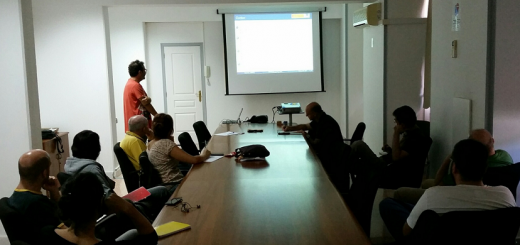Update of the product GLOBALVIEW-CO2, and some explanations to understand the Atmospheric Carbon Cycle


GLOBALVIEW-CO2 is a product of the Cooperative Atmospheric Data Integration Project, lead by NOAA ESRL (National Oceanic and Atmospheric Administration, Earth System Research Laboratory). It is a cooperative effort among the many organizations and institutions making high-quality atmospheric CO2 measurements, being the Izaña Atmospheric Research Center (AEMET) one of them. A new release of the product has been published recently, with data till the end of 2010.
The product has a very specialized scope: address issues of temporal discontinuity and data sparseness in atmospheric observations, and transform data to a single standard scale. It is a tool intended to be used in carbon cycle modelling. So, the core result of the product is a large collection of CO2 time series (for the sites where measurements are carried out), obtained from measured data after applying several sophisticated statistical techniques. Also, CO2 marine boundary layer (MBL; the atmospheric layer located just above sea surface) weekly time series for (41) different latitudes are an additional output of the product.
However, clicking on this link, you can access to the introduction web page of the product, where a graphical animation with results is shown. Such animation shows, in a very simple way, a lot of information, as it is explained hereafter. The comments that follow are not in the Globalview-CO2 website, but have been written by a meteorologist that works at this centre of AEMET.
The movie shows the latitude distribution (from south to north) of CO2 average monthly values from 2001 to 2010 derived from the GLOBALVIEW-CO2 extended records. Instead of latitude running from 90ºS (-90º) to 90ºN (+90º), sine of latitude is represented (which is more representative of surface extension in the spherical Earth), so -1.0 corresponds to 90ºS, -0.6 corresponds to 37ºS, 0.0 correspond to 0º, 0.6 correspond to 37ºN, 1.0 corresponds to 90ºN… Cyan circles are values from sampling locations in the marine boundary layer thought to be regionally representative (a smooth curve fitted to these data is also showed); “pluses” are values from other locations (ground stations, aircrafts, and towers), and many of them are influenced by CO2 local sources and sinks. The following facts can be observed in the movie:
1) There is a large seasonal cycle in the Northern Hemisphere (NH) due to seasonal plants activity (absorption of atmospheric CO2 due to net plants growth in spring and summer; and emission of atmospheric CO2 due to net plants decomposition in autumn and winter), and almost no seasonal cycle in the Southern Hemisphere (SH), because the surface fraction of lands and plants in middle latitudes of the SH is very small.
2) There is a global CO2 “slow” increase of around 2 ppm/year (net increase due to anthropogenic sources).
3) Using as reference the almost constant with latitude CO2 level in the SH, it can be seen that the apparent seasonal increase in the NH is much larger than its seasonal decrease. This is due to following facts: almost all the anthropogenic CO2 sources are in the NH, there is a net transport of CO2 from the NH to the SH, and there is a global CO2 increase.
4) Dark blue “pluses” (aircraft measurements) in the NH, tend to be “delayed” following the seasonal oscillation of the MBL, and therefore have a smaller seasonal cycle than the MBL. This is due to the fact that the sources and sinks are at the surface level, whereas aircraft measurements are carried out at high altitude in the free troposphere, where surface influence takes some time to be noticed.
5) Many ground stations (red “pluses”) are located near local sources (all the year) and sinks (only part of the year), so, their seasonal amplitudes are different from that of the MBL, and in particular, almost all the red “pluses” in the NH are above the MBL level during the growing part of the seasonal cycle (due to local sources); and some of them are bellow the MBL level during the decreasing part of the seasonal cycle (those for which there is a net local sink, that is, the local sink due to plants is larger than local anthropogenic sources).






